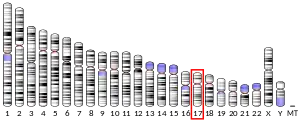| AATK | |||||||||||||||||||||||||||||||||||||||||||||||||||
|---|---|---|---|---|---|---|---|---|---|---|---|---|---|---|---|---|---|---|---|---|---|---|---|---|---|---|---|---|---|---|---|---|---|---|---|---|---|---|---|---|---|---|---|---|---|---|---|---|---|---|---|
| Identifiers | |||||||||||||||||||||||||||||||||||||||||||||||||||
| Aliases | AATK, AATYK, AATYK1, LMR1, LMTK1, PPP1R77, p35BP, apoptosis-associated tyrosine kinase, aatyk1, mKIAA0641, apoptosis associated tyrosine kinase | ||||||||||||||||||||||||||||||||||||||||||||||||||
| External IDs | OMIM: 605276 MGI: 1197518 HomoloGene: 74861 GeneCards: AATK | ||||||||||||||||||||||||||||||||||||||||||||||||||
| |||||||||||||||||||||||||||||||||||||||||||||||||||
| |||||||||||||||||||||||||||||||||||||||||||||||||||
| |||||||||||||||||||||||||||||||||||||||||||||||||||
| |||||||||||||||||||||||||||||||||||||||||||||||||||
| |||||||||||||||||||||||||||||||||||||||||||||||||||
| Wikidata | |||||||||||||||||||||||||||||||||||||||||||||||||||
| |||||||||||||||||||||||||||||||||||||||||||||||||||
Serine/threonine-protein kinase LMTK1 (also known as Apoptosis-associated tyrosine kinase) is an enzyme that in humans is encoded by the (AATK) gene.[5][6][7]
Structure and expression
The gene was identified in 1998. It is located on chromosome 17 (17q25.3) and is expressed in the pancreas, kidney, brain and lungs. The protein is composed of 1,207 amino acids.[5][6]
Function
The protein contains a tyrosine kinase domain at the N-terminal end and a proline-rich domain at the c-terminal end. Studies of the mouse homologue have indicated that it may be necessary for the induction of growth arrest and/or apoptosis of myeloid precursor cells. It may also have a role in inducing differentiation in neuronal cells.[7][8] Its suppressive role on melanoma development has been reported recently.[9]
AATK is thought to indirectly inhibit the SPAK/WNK4 activation of the Na-K-Cl cotransporter.[10]
References
- 1 2 3 GRCh38: Ensembl release 89: ENSG00000181409 - Ensembl, May 2017
- 1 2 3 GRCm38: Ensembl release 89: ENSMUSG00000025375 - Ensembl, May 2017
- ↑ "Human PubMed Reference:". National Center for Biotechnology Information, U.S. National Library of Medicine.
- ↑ "Mouse PubMed Reference:". National Center for Biotechnology Information, U.S. National Library of Medicine.
- 1 2 Ishikawa K, Nagase T, Suyama M, Miyajima N, Tanaka A, Kotani H, Nomura N, Ohara O (Jun 1998). "Prediction of the coding sequences of unidentified human genes. X. The complete sequences of 100 new cDNA clones from brain which can code for large proteins in vitro". DNA Research. 5 (3): 169–76. doi:10.1093/dnares/5.3.169. PMID 9734811.
- 1 2 Seki N, Hayashi A, Hattori A, Kozuma S, Ohira M, Hori T, Saito T (Apr 1999). "Chromosomal assignment of a human apoptosis-associated tyrosine kinase gene on chromosome 17q25.3 by somatic hybrid analysis and fluorescence in situ hybridization". Journal of Human Genetics. 44 (2): 141–2. doi:10.1007/s100380050130. PMID 10083745.
- 1 2 "Entrez Gene: AATK apoptosis-associated tyrosine kinase".
- ↑ Kos A, Olde Loohuis NF, Wieczorek ML, Glennon JC, Martens GJ, Kolk SM, Aschrafi A (2012). "A potential regulatory role for intronic microRNA-338-3p for its host gene encoding apoptosis-associated tyrosine kinase". PLOS ONE. 7 (2): e31022. Bibcode:2012PLoSO...731022K. doi:10.1371/journal.pone.0031022. PMC 3281898. PMID 22363537.
- ↑ Ma S, Rubin BP (Apr 2014). "Apoptosis-associated tyrosine kinase 1 inhibits growth and migration and promotes apoptosis in melanoma". Laboratory Investigation. 94 (4): 430–438. doi:10.1038/labinvest.2014.13. PMID 24589855.
- ↑ Gagnon KB, England R, Diehl L, Delpire E (May 2007). "Apoptosis-associated tyrosine kinase scaffolding of protein phosphatase 1 and SPAK reveals a novel pathway for Na-K-2C1 cotransporter regulation". American Journal of Physiology. Cell Physiology. 292 (5): C1809–C1815. doi:10.1152/ajpcell.00580.2006. PMID 17267545. S2CID 10258460.
Further reading
- Nakajima D, Okazaki N, Yamakawa H, Kikuno R, Ohara O, Nagase T (Jun 2002). "Construction of expression-ready cDNA clones for KIAA genes: manual curation of 330 KIAA cDNA clones". DNA Research. 9 (3): 99–106. doi:10.1093/dnares/9.3.99. PMID 12168954.
- Raghunath M, Patti R, Bannerman P, Lee CM, Baker S, Sutton LN, Phillips PC, Damodar Reddy C (May 2000). "A novel kinase, AATYK induces and promotes neuronal differentiation in a human neuroblastoma (SH-SY5Y) cell line". Brain Research. Molecular Brain Research. 77 (2): 151–62. doi:10.1016/S0169-328X(00)00048-6. PMID 10837911.
- Tomomura M, Hasegawa Y, Hashikawa T, Tomomura A, Yuzaki M, Furuichi T, Yano R (Apr 2003). "Differential expression and function of apoptosis-associated tyrosine kinase (AATYK) in the developing mouse brain". Brain Research. Molecular Brain Research. 112 (1–2): 103–12. doi:10.1016/S0169-328X(03)00054-8. PMID 12670708.
- Honma N, Asada A, Takeshita S, Enomoto M, Yamakawa E, Tsutsumi K, Saito T, Satoh T, Itoh H, Kaziro Y, Kishimoto T, Hisanaga S (Oct 2003). "Apoptosis-associated tyrosine kinase is a Cdk5 activator p35 binding protein". Biochemical and Biophysical Research Communications. 310 (2): 398–404. doi:10.1016/j.bbrc.2003.08.143. PMID 14521924.
- Piechotta K, Garbarini N, England R, Delpire E (Dec 2003). "Characterization of the interaction of the stress kinase SPAK with the Na+-K+-2Cl- cotransporter in the nervous system: evidence for a scaffolding role of the kinase". The Journal of Biological Chemistry. 278 (52): 52848–56. doi:10.1074/jbc.M309436200. PMID 14563843.
External links
- AATK human gene location in the UCSC Genome Browser.
- AATK human gene details in the UCSC Genome Browser.



